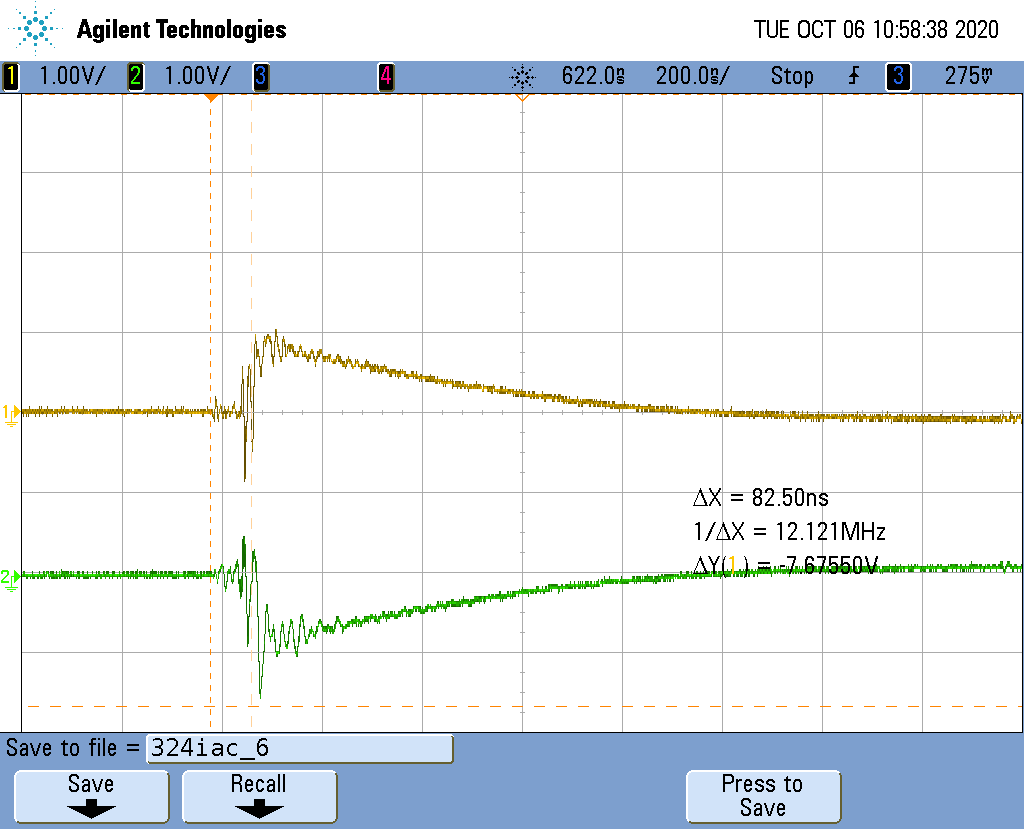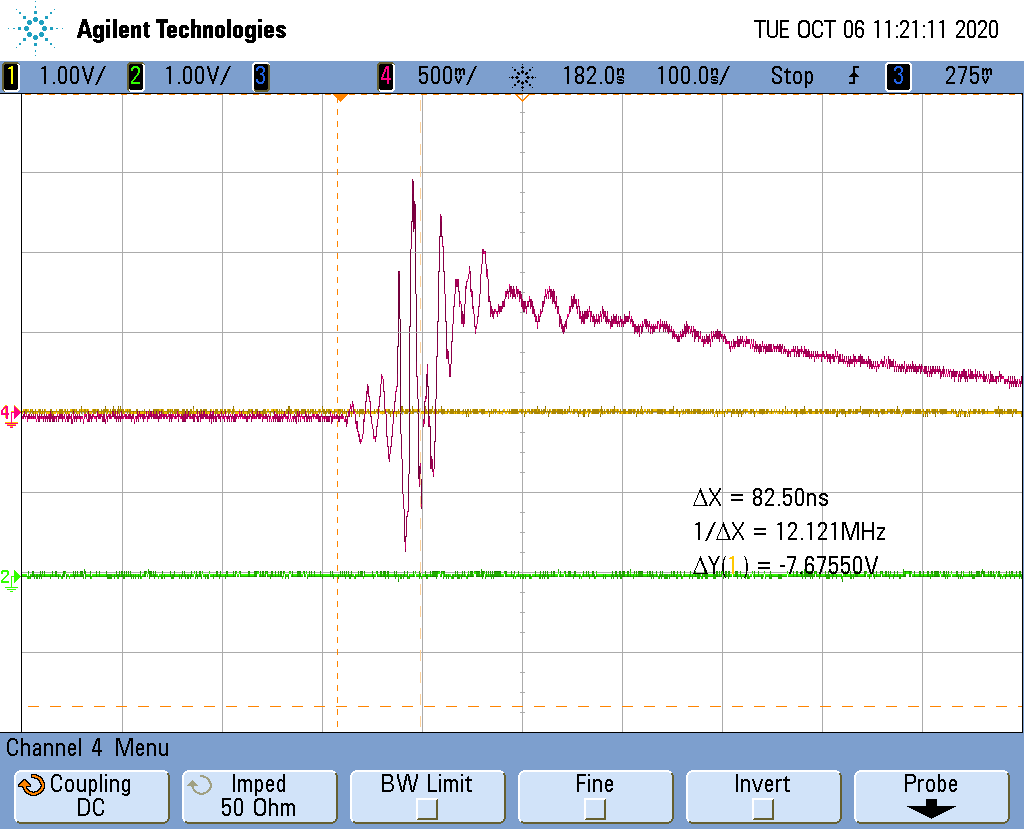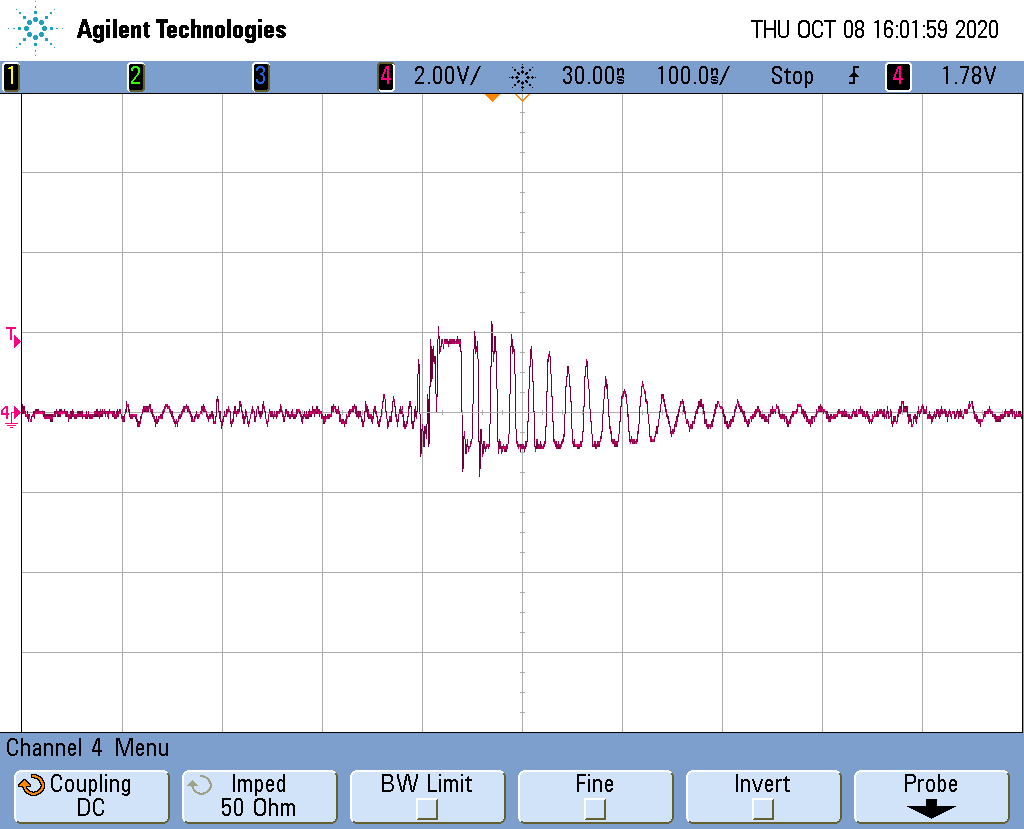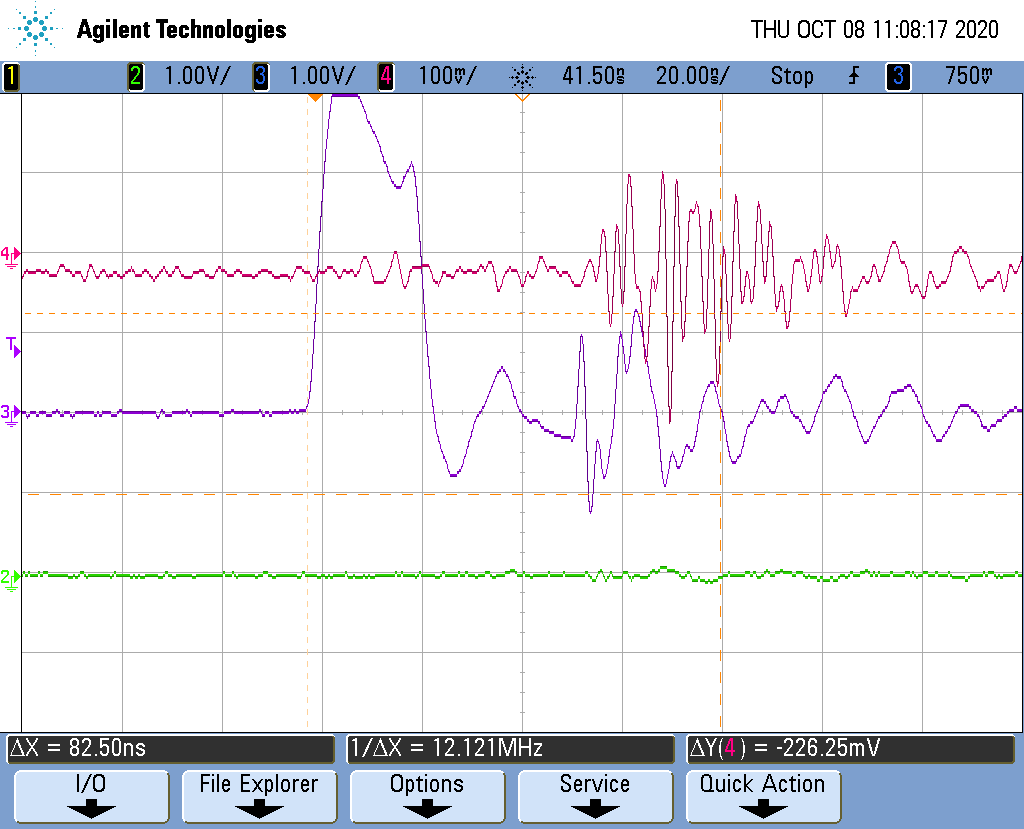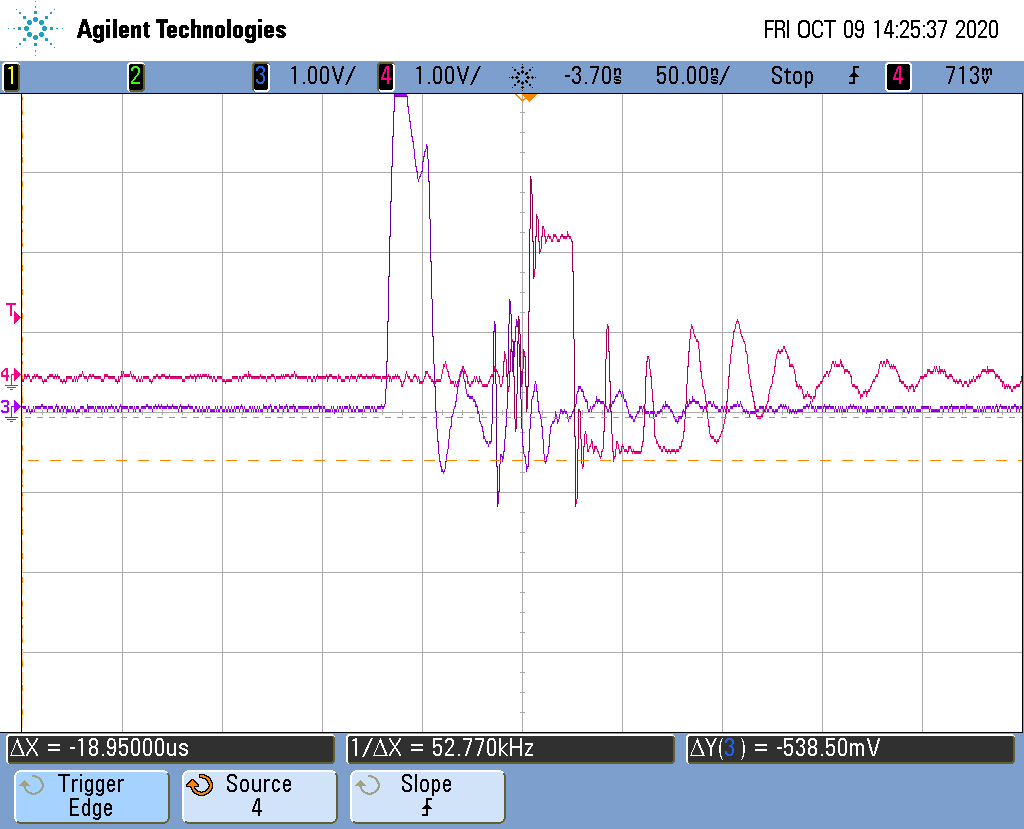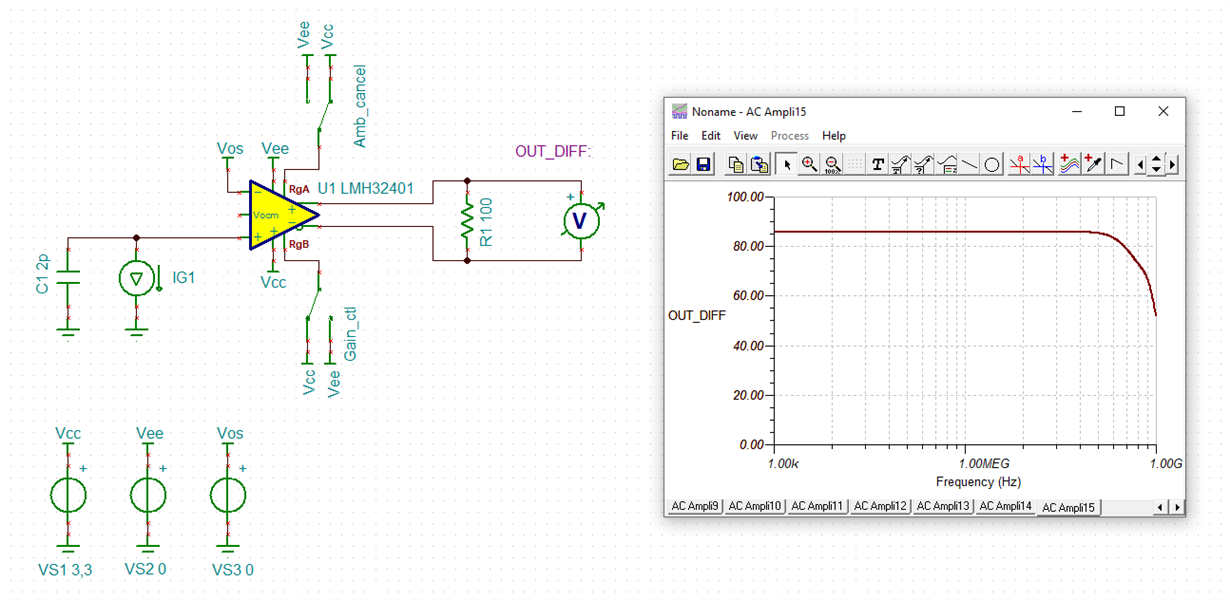Other Parts Discussed in Thread: LMH32401, TINA-TI, OPA857, OPA857EVM
Hi,
I am evaluating the part LMH32401 for use in my LIDAR system (TOF type). I generate a laser pulse of pulse width 20 ns periodically from a laser driver board, then bounce it off and I am trying to use the LMH32401 demo board as a receiver.
I have soldered an avalanche photodiode ( part no.APD50-8-150, OSI optoelectronics make), Cpd = 105 pF to the EVM. The anode is connected to -160 V bias(generated from a DC-DC converter) and the cathode is shorted to the IN port of the evaluation board. So the photodiode is in current sinking mode. The IDC_EN pin is set to LOW to enable cancellation of the DC ambient light.
When I fire the pulses to a reflecting target and try to capture the pulse with the EVM, I am getting oscillations on the rising edge on both the inverting and non-inverting output. The AC coupled differential output also has the same ringing on rising edge of the pulse.
I intend to connect the output of the EVM to a comparator to generate pulses which will be given to a TDC ( time to digital converter) for time delay measurement to be converted to distance.
When I do so, I get multiple pulses because of the ringing. Can someone please help me in eliminating the ringing.


